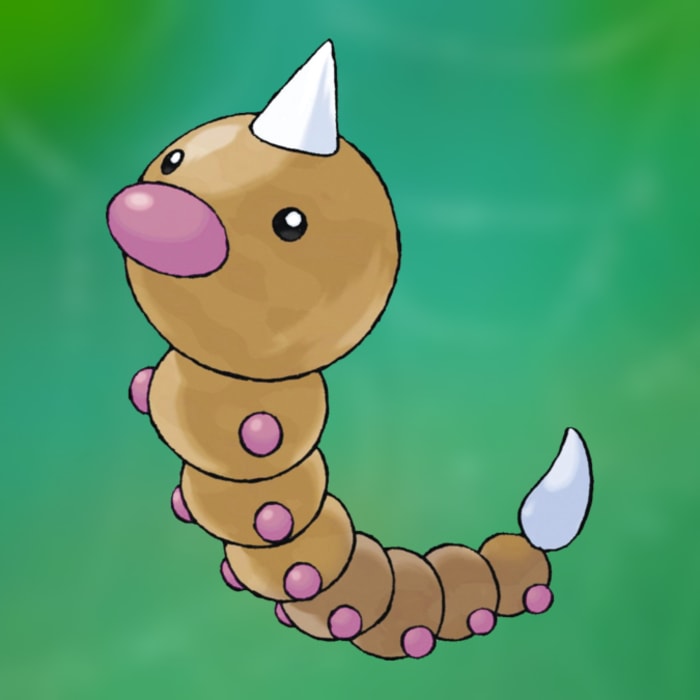Real animals named after Pokémon

Contents
Pokémon look like real animals a lot of the time and are often named in reference to them as well – as the saying goes: art imitates life. However, so impactful have the imaginary creatures been on our culture, that researchers from all over the world have started naming newly discovered species of animals and insects after Pokémon in the last two decades, closing the circle.
Most of these namings resulted from the researchers being big Pokémon fans themselves, in other cases it might have been a targeted ploy to get wider media attention – which definitely worked, so fair play.
Here are all real animals named after Pokémon.
Nocticola pheromosa
Named after the Ultra Beast Pheromosa, Nocticola pheromosa is a species of cockroaches that was discovered in Singapore and named after the Bug-type Pokémon by two fans of the video games. “There are some similarities between Pheromosa and the delicate cockroach that we found, such as having a long antenna, wings that mimic a hood and long slender legs,” said the entomologist Foo Maosheng, who co-authored the finding.


Bulbasaurus phylloxyron
Bulbasaurus phylloxyron was actually not primarily named after the beloved Gen 1 Grass-type starter Pokémon, but rather after its bulbous nasal bosses, though one of the authors of the species’ scientific description, Christian Kammerer, admitted that “if one wished to read between the lines concerning certain similarities, I wouldn't stop them” and later noted that “similarities between this species and certain other squat, tusked quadrupeds may not be entirely coincidental.”
The same goes for the second part of the name, phylloxyron, which means “leaf razor” and is officially derived from its leaf-cutting keratin-covered jaws, but can well be taken as a reference to one of Bulbasaur’s most iconic moves, Razor Leaf. Bulbasaurus phylloxyron might even have looked a little bit like its namesake, being a four-legged herbivore somewhat between a reptile and a mammal that lived around 25 million years ago in what is now South Africa.


Binburrum articuno, Binburrum moltres, and Binburrum zapdos
You know about the Kanto trio, but have you ever heard of the Binburrum trio? The Binburrum genus is a species of beetle found in Australia and had five members until 2020, when the researchers Darren Pollock and Yun Hsiao found three additional relatives in the Australian National Insect Collection. Apparently it was Hsiao’s idea to name the three insects after Articuno, Moltres, and Zapdos to signify how rare these beetle species are – the broad media coverage their discovery received after that was a welcome bonus.


Chilicola charizard
In 2016, Canadian researcher Spencer K. Monckton discovered a new species of bee in Chile while working on his master’s degree. Having played the original editions with Charmander as a starter, Monckton could not resist the urge to name his discovery Chilicola charizard after the Gen 1 Fire-starter’s final evolution. He did note, however, that the bee’s head shape as well as its orange coloring reminded him of Charizard as well, which contributed to his decision to name it after the Pokémon. It certainly looks as fearsome as the imaginary creature up close, though thankfully it can’t spit fire.


Stentorceps weedlei
Stentorceps weedlei is perhaps the creature that fits its Pokémon-inspired name most as it is a wasp named after Weedle, which eventually evolves into the wasp-like Beedrill. This species, which was found in the African countries of Botswana and Madagascar, sports a horn-like spike on its head, which prompted the two describing researchers, Matthew Nielsen and Matthew Buffington, to name it after the Pokémon in 2011.


Aerodactylus scolopaciceps
Aerodactyl is a Gen 1 fossil Pokémon, making it perfectly suited to stand as inspiration for this species of flying dinosaur that lived around 150 million years ago. Aerodactylus scolopaciceps was discovered in Germany in 1850, but had first been classified as a member of the species Pterodactylus – in fact, this remains a hotly debated topic amongst experts to this day. Steven Vidovic and David Martill reviewed the old findings in 2014, coining the new species name in honor of the Pokémon.
“The name derives from the Nintendo Pokémon Aerodactyl, a fantasy creature made up of a combination of different pterosaurian features. It seemed a pertinent name for a genus which has been synonymous with Pterodactylus for so long due to a combination of features,” the two wrote.
However, Christopher Bennett challenged their view in 2018, so this is an ongoing debate for the scholars of the field. The name Aerodactylus is composed of the Greek words for wind and finger.


Here is a bonus fun fact for making it this far: There is also a protein that was discovered in 2008 in Japan that was named Pikachurin after everyone’s favorite Pokémon mascot.
